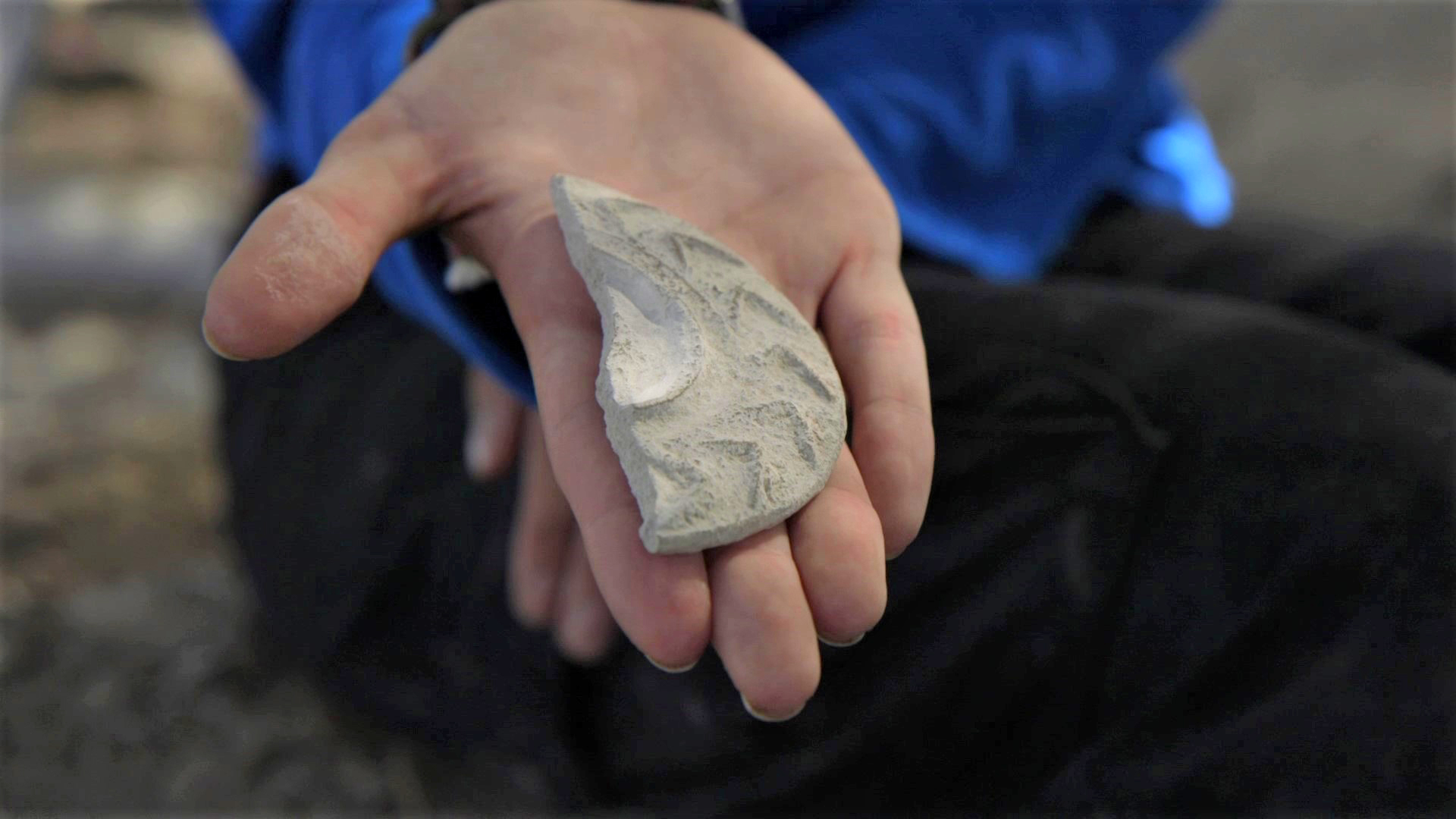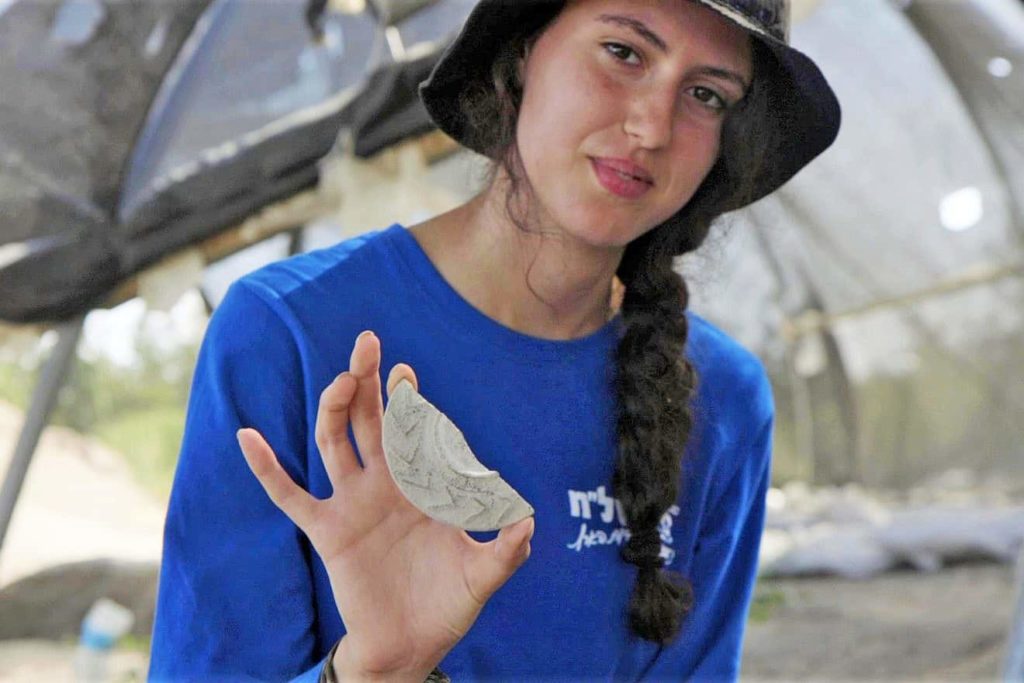
In a recent event called the Young Leaders’ Survival Course, put together by the Israeli Antiquities Authority, a seventeen-year-old girl made a new discovery: a Byzantine “exorcism mirror.”
While exploring, she noticed a unique piece of pottery sticking out from the ground near a building, reported the Medievalists website.
Dr. Einat Ambar-Armon, who serves as the Director of the Israel Antiquities Authority Northern Education Center, determined that the pottery shard that the young girl found, is part of a Byzantine mirror believed to be magical.

Protect homes from evil spirits
As explained by Navit Popovitch, the Curator of Classical Periods at the Israel Antiquities Authority, the broken piece was originally part of a mirror used during the Byzantine period, which existed between the 4th and 6th centuries AD.
These mirrors were known as “exorcism mirrors” and had a special purpose. They were employed as sacred items to safeguard homes from evil spirits. Moreover, these mirrors have a connection to ancient Jewish objects called “enchantment bowls.”
Jewish enchantment bowls were usually crafted from clay and adorned with Aramaic or Hebrew prayers as well as verses from the Bible. These elements were believed to provide protection to people and their homes against demons and spirits.
Incantation Bowl with an Aramaic Inscription around a demon, from Nippur, Mesopotamia. (6th-7th Century AD)
Ritual of incantation bowls involves inscribing a ceramic bowl with a spell of protection or healing and then burying it under a threshold or in corner of a home. pic.twitter.com/NbtjlDCtP4
— Archaeo – Histories (@archeohistories) December 28, 2021
These bowls were cleverly buried upside down beneath houses or in specific spots, as it was thought that doing so would effectively “trap” and make any evil entities harmless.
Reflecting a syncretism of Jewish and Christian beliefs
These bowls, similar to the Byzantine exorcist mirrors, offer important information about the religious and cultural customs of both Jewish and Byzantine Christian groups during that era.
They reveal a blend of beliefs from both traditions, as well as the prevalent local stories. These items were mainly discovered in Mesopotamia and Persia, yet they also exhibit links to wider cultural and religious practices in the ancient Near East.
It’s important to highlight that the primary use of these Byzantine exorcism mirrors was as sacramentals rather than for superstitious reasons.
Incantation bowl from Mesopotamia, ca. seventh century. Usually buried in a building’s foundation, magic bowls were designed to protect a house and its inhabitants from devils and evildoers. pic.twitter.com/v08MDfGuXe
— ★🜁 𝐌𝐀𝐑𝐊🕊️★ (@thematrixwizard) July 24, 2023
Philip Kosloski, a writer with a bachelor’s degree in philosophy and Catholic studies and a master’s degree in theology from the Augustine Institute, explains that sacramentals are items that the Church designates as special or blessed to enhance our spiritual lives and guide us toward the sacraments. They serve as sacred symbols and bring us spiritual assistance through the Church’s intercession.
Sacramentals encompass various items like scapulars, medals, holy cards, rosaries, and crucifixes—basically, anything that a priest blesses using holy water.
Another way to describe sacramentals, according to Kosloski, is as “extensions of the sacraments.” While they aren’t sacraments themselves, they are linked to the seven sacraments and originate from them, ultimately guiding us back to those sacraments.
See all the latest news from Greece and the world at Greekreporter.com. Contact our newsroom to report an update or send your story, photos and videos. Follow GR on Google News and subscribe here to our daily email!



